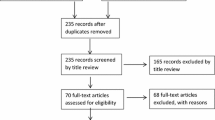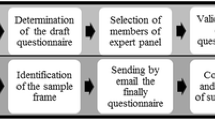Abstract
In occupational settings, occupational health experts utilize risk prediction, identification, and evaluation to proceed with the hierarchy of controls (elimination, substitution, engineering controls, administrative controls, and personal protective equipment (PPE)) in order to determine and recommend the most suitable control measures based on the nature of the work, associated hazards, and risk assessment results. While the existing hierarchy of controls for occupational hazards appears suitable from a theoretical, scientific, and practical standpoint, a pertinent question arises: Can this hierarchy of controls, which has demonstrated acceptable efficacy thus far, be effectively applied to novel technologies like nanotechnology, which may introduce new risks?
Our investigations showed that elimination and substitution are not applicable in the environments involved with nanomaterials. So, it is suggested that the process of protecting employees involved with nanomaterials initiates with the provision of suitable personal protective equipment recommended for working with nanomaterials as the first step. Concurrently, it is essential to commence comprehensive training addressing the safety, health, and environmental aspects of nanotechnology, with a particular emphasis on the proper utilization, maintenance, and disposal of personal protective equipment. In addition to these measures, it is imperative not to overlook the endeavors aimed at developing and implementing appropriate engineering controls for handling nanomaterials.


Similar content being viewed by others
References
Bo Alli (2008) Fundamental principles of occupational health and safety. International Labour Organization, Geneva
Harati B et al (2017) Risk assessment of chemical pollutants in an automobile manufacturing. J-Health-Saf-Work 7(2):121–130
Global consumption of chemicals in 2021, [ July 4, 2023]; Available from: https://www.statista.com/statistics/486582/worldwide-consumption-of-chemicals-in-by-region/
Number of employees in the chemical industry worldwide in 2021, by select country. [July 4, 2023]. Available from: https://www.statista.com/statistics/1330080/global-chemical-industry-employees-by-country/
Malakouti J et al (2014) Health risk assessment of occupational exposure to hazardous chemicals in laboratories of Qom University of Medical Sciences. IOH 11(2):13–25
WHO (2021) The public health impact of chemicals: knowns and unknowns (No. WHO/FWC/PHE/EPE/16.01).World Health Organization, Geneva
de Castro AB (2003) ‘Hierarchy of controls’: providing a framework for addressing workplace hazards. AJN Am J Nurs 103(12):104
UofT (2020) Guidelines on working with nanomaterials in the laboratory. University of Toronto
Topmiller JL, Dunn KH (2013) Current strategies for engineering controls in nanomaterial production and downstream handling processes. National Institute for Occupational Safety and Health (NIOSH), Cincinnati
Safety & Wellbeing Team (2020) Working safely with engineered nanoparticles work health and safety manual. University of South Australia, Australia
Dolez PI, Bodila N, Lara J, Truchon G (2010) Personal protective equipment against nanoparticles. Int J Nanotechnol 7(1):99–117
INSO (2014) Nanotechnologies –Vocabulary-Part 7: diagnostics and therapeutics for healthcare [in Persian]. Iranian National Standardization Organization, Tehran
Piccinno F, Gottschalk F, Seeger S, Nowack B (2012) Industrial production quantities and uses of ten engineered nanomaterials in Europe and the world. J Nanopart Res 14:1–11
Zalk DM, Paik SY, Chase WD (2019) A quantitative validation of the control banding nanotool. Ann Work Exposures Health 63(8):898–917
Brouwer D (2010) Exposure to manufactured nanoparticles in different workplaces. Toxicology 269(2–3):120–127
Tsai C-J et al (2011) Exposure assessment of nano-sized and respirable particles at different workplaces. J Nanopart Res 13(9):4161–4172
ISO (2008) Health and safety practices in occupational settings relevant to nanotechnologies. International Organization for Standardization, Geneva
Savolainen K, and Pietroiusti A,(2017) Chapter 5 - Exposure assessment, in Adverse Effects of Engineered Nanomaterials (Second Edition), Fadeel B, Pietroiusti A, and Shvedova AA, Editors, Academic Press. pp. 103–123
Jiménez AS, and van Tongeren M (2017) Assessment of human exposure to ENMs. Modelling the Toxicity of Nanoparticles. pp. 27–40
Ding Y et al (2017) Airborne engineered nanomaterials in the workplace—a review of release and worker exposure during nanomaterial production and handling processes. J Hazard Mater 322:17–28
Stefaniak AB et al (2013) Nanoscale reference materials for environmental, health and safety measurements: needs, gaps and opportunities. Nanotoxicology 7(8):1325–1337
Rasmussen K, Rauscher H, and Mech A (2017) Chapter 2 - Physicochemical characterization, in Adverse effects of engineered nanomaterials (second edition), Fadeel B, Pietroiusti A, and Shvedova AA, Editors. Academic Press. pp. 15–49
Westmeier D, Knauer SK, Stauber RH, and Docter D (2017) Chapter 1 - Bio–nano interactions, in Adverse effects of engineered nanomaterials (second edition), Fadeel B, Pietroiusti A, and Shvedova AA, Editors. 2017, Academic Press. pp. 1–12
Pietroiusti A, Magrini A (2014) Engineered nanoparticles at the workplace: current knowledge about workers’ risk. Occup Med 64(5):319–330
Bleeker E et al (2016) Physical-chemical properties of nanomaterials: evaluation of methods applied in the OECD-WPMN testing programme. Organisation for Economic Co-operation and Development, Paris
Omari Shekaftik S et al (2022) Investigating the relationship between occupational exposure to nanomaterials and symptoms of nanotechnology companies’ employees. Arch Environ Occup Health 77(3):209–218
Colognato R, Park MVDZ, Wick P, De Jong WH (2012) Chapter 1 - Interactions with the human body. In: Fadeel B, Pietroiusti A, Shvedova AA (eds) adverse effects of engineered nanomaterials. Academic Press, Boston, pp 3–24
Alenius H, et al (2017) Chapter 10 - respiratory system, Part two: allergy and asthma, in Adverse effects of engineered nanomaterials (second edition), Fadeel B, Pietroiusti A, and Shvedova AA, Editors. Academic Press. pp. 243–253
Kreyling WG et al (2014) Air–blood barrier translocation of tracheally instilled gold nanoparticles inversely depends on particle size. ACS Nano 8(1):222–233
Ghafari J, Moghadasi N, Shekaftik SO (2020) Oxidative stress induced by occupational exposure to nanomaterials: a systematic review. Ind Health 58(6):492–502
Freeland J et al (2016) Working safely with nanomaterials in research & development. The UK NanoSafety Group (UKNSG), London
Nanomaterials Safety Guidelines. [ July 4, 2023]. Available from: https://ehs.stonybrook.edu/programs/laboratory-safety/general-laboratory-safety/nanomaterials-safety-guidelines.php
SU, (2009) General principles and practices for working safely with engineered nanomaterials. Stanford University, Stanford
Vogel U et al (2013) Handbook of nanosafety: measurement, exposure and toxicology. Academic Press, Elsevier Inc., San Diego
Gibbs L, Lamba F, Stoxkmeier B, and Kojola W (2012) General safe practices for working with engineered nanomaterials in research laboratories. National Institute for Occupational Safety and Health (NIOSH), Cincinati
WHO (2017) guidelines on protecting workers from potential risks of manufactured nanomaterials. World Health Organization, Geneva
Díaz-Soler BM, López-Alonso M, Martínez-Aires MD (2017) Nanosafety practices: results from a national survey at research facilities. J Nanopart Res 19(5):169
CU, (2017) Nanomaterials Safety Guidelines. Concordia University, Canada
NIOSH (2018) Controlling health hazards when working with nanomaterials: questions to ask before you start. National Institute for Occupational Safety & Health, Cincinati
Omari Shekaftik S, Sedghi Noushabadi Z, Ashtarinezhad A (2022) Nanosafety: a knowledge, attitude and practice (KAP) study among Iranian researchers working in nanotechnology laboratories. Int J Occup Saf Ergon. 28(4):2541–2545
WHO (2017) guidelines on protecting workers from potential risks of manufactured nanomaterials. World Health Organization, Geneva
European Commission, Directorate-General for Employment, Social Affairs and Inclusion (2019) Working safely with manufactured nanomaterials – Non-binding guide for workers. Publications Office. https://data.europa.eu/doi/10.2767/28405
OSHA (2013) Working safely with nanomaterials. The Occupational Safety and Health Administration, Washington, D.C.
NIH (2014) Nanotechnology safety and health program. National Institutes of Health, Maryland
UofA (2015) Working safely with nanotechnology (OHS_HS239). University of Alabama, Birmingham
UofT (2012) Nanoparticles safety guide. University of Texas, Austin
Author information
Authors and Affiliations
Corresponding author
Ethics declarations
Conflict of interest
The authors declare that they have no conflict of interest.
Additional information
Publisher's Note
Springer Nature remains neutral with regard to jurisdictional claims in published maps and institutional affiliations.
Rights and permissions
Springer Nature or its licensor (e.g. a society or other partner) holds exclusive rights to this article under a publishing agreement with the author(s) or other rightsholder(s); author self-archiving of the accepted manuscript version of this article is solely governed by the terms of such publishing agreement and applicable law.
About this article
Cite this article
Omari Shekaftik, S., Golbabaei, F. & SheikhMozafari, M.J. An analysis of “hierarchy of controls” in workplaces and laboratories involving nanomaterials. J Nanopart Res 25, 245 (2023). https://doi.org/10.1007/s11051-023-05891-3
Received:
Accepted:
Published:
DOI: https://doi.org/10.1007/s11051-023-05891-3




